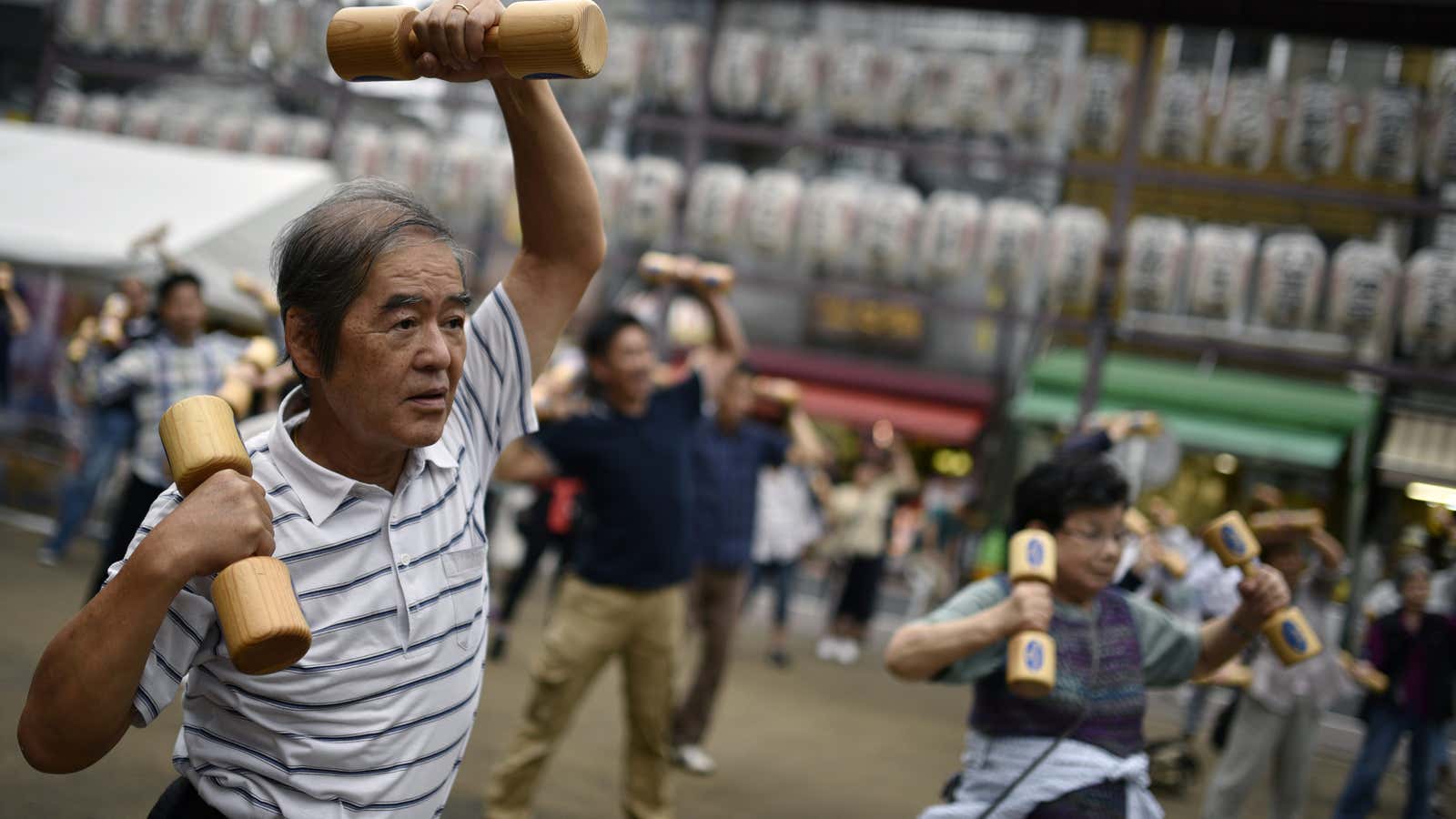Another year, another record for Japan’s elderly population.
As Japan celebrates Respect for the Aged Day today (Sept. 19), the country released a report (link in Japanese) showing that the country’s population continues to get ever grayer. During the national public holiday, restaurants give free meals to the elderly and young people give gifts to older members in the family. E-commerce site Rakuten, for example, recommends giving a kumquat plant, which symbolizes longevity.
The number of people over the age of 65 in Japan is now at 34.6 million. Last year, 4,124 people turned 100 in Japan, and the number of centenarians hit another record of 65,692—the 46th consecutive yearly increase. There are now 10.5 million octogenarians in Japan—more than the entire population of Sweden or Portugal.
People over 65 now make up more than 27% of Japan’s total population. The United Nations projects (pdf) that 37.3% of people in Japan will be over the age of 60 by 2030.
Which makes it the country with the largest share of elderly people, by quite a long way:
Japan and many East Asian and European countries are not making babies fast enough. In 2015, the average Japanese woman gave birth to 1.5 children, below the replacement rate of 2.1, according to the UN. Portugal actually just eked out the rock bottom spot in terms of birth rate:
That means that more and more old people have to stay in the labor force as obligations mount on the state and on family to support the elderly. Japan, which still imports a very low number of foreign workers, is mulling increasing imports of foreign workers (paywall) to help counter the effects of a graying population. But for now, more old people in Japan are employed compared to other high-income countries—though it is a trend that is increasing in those countries too.
